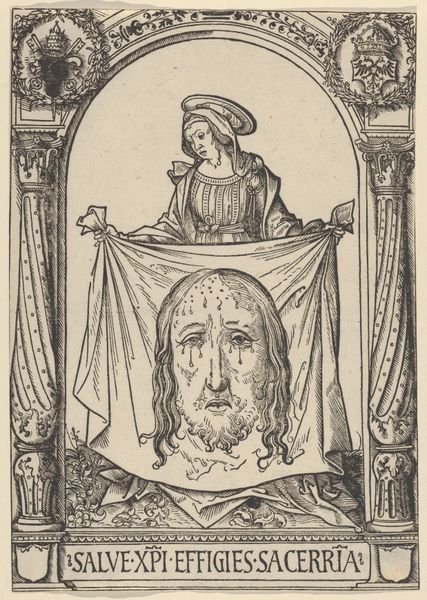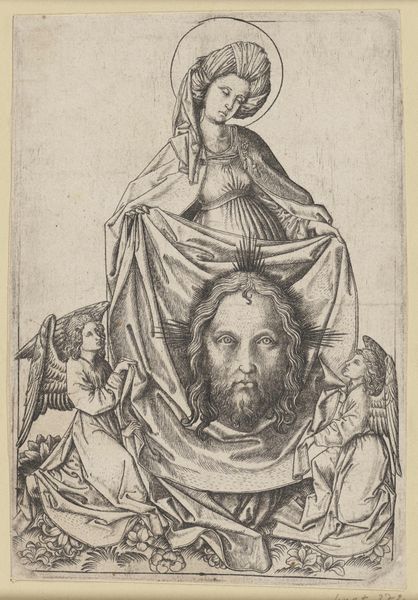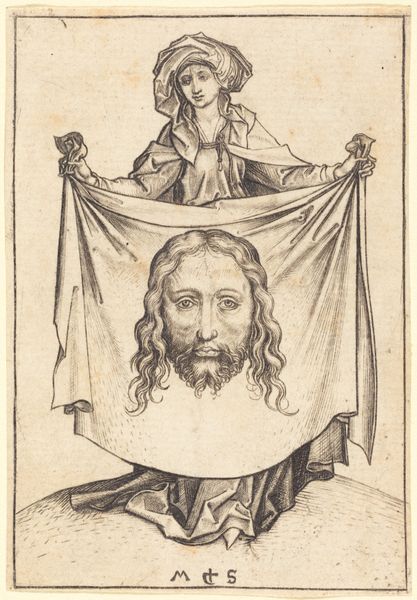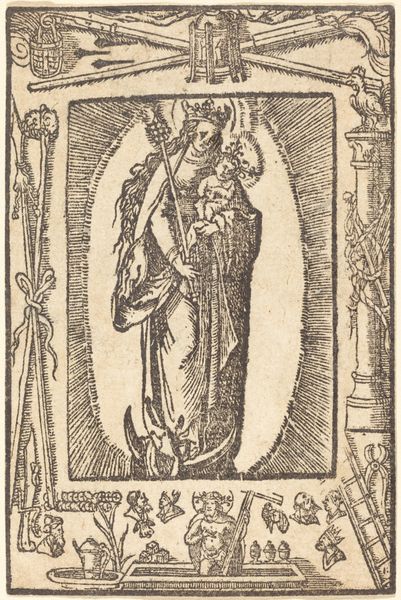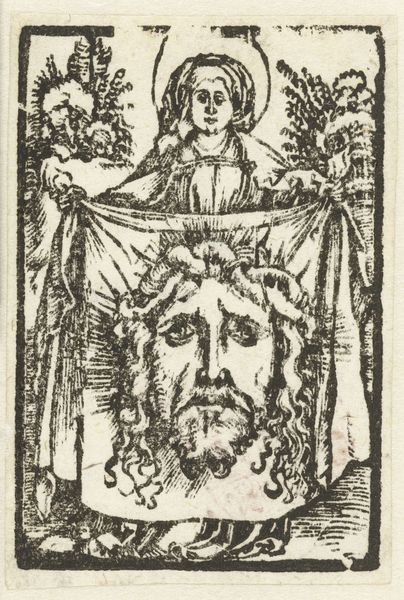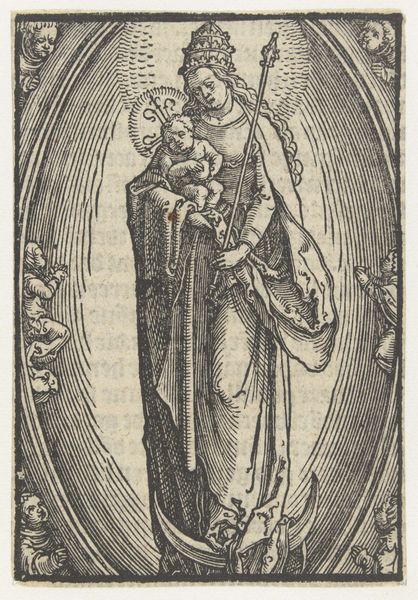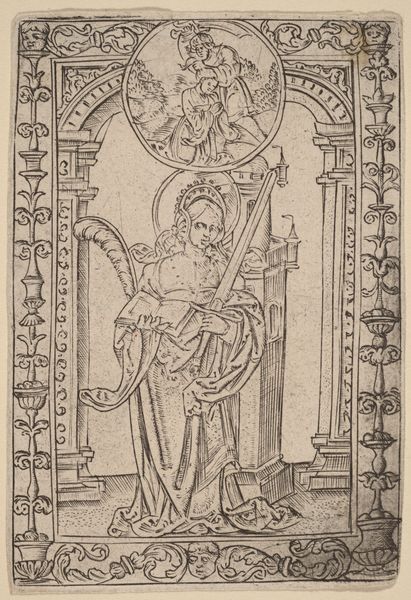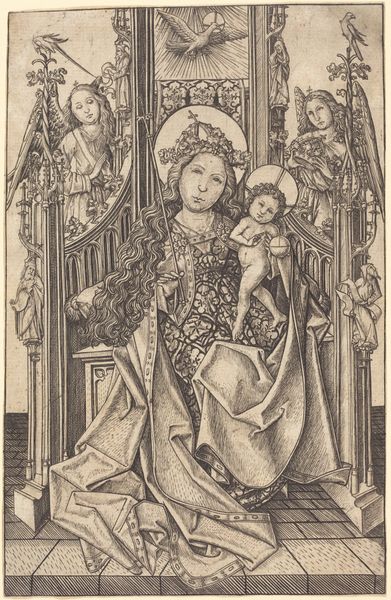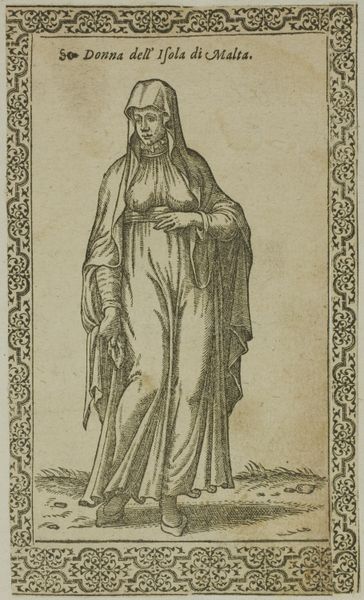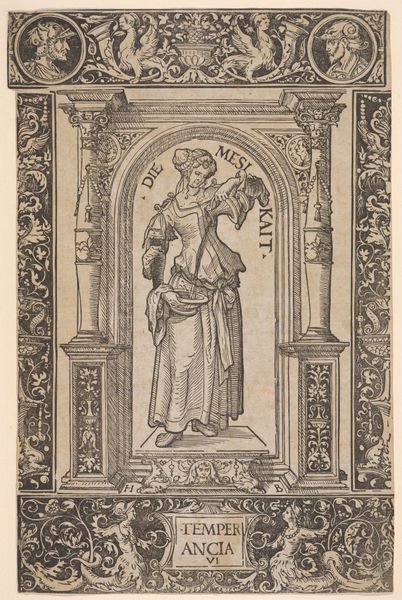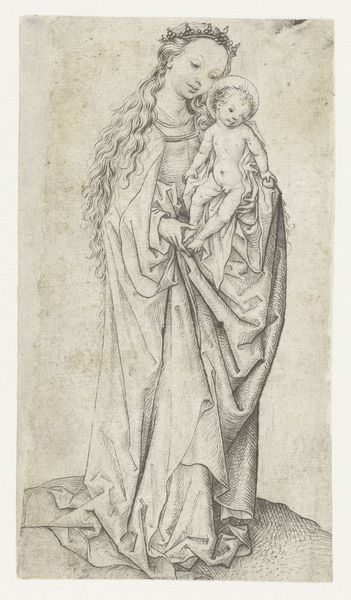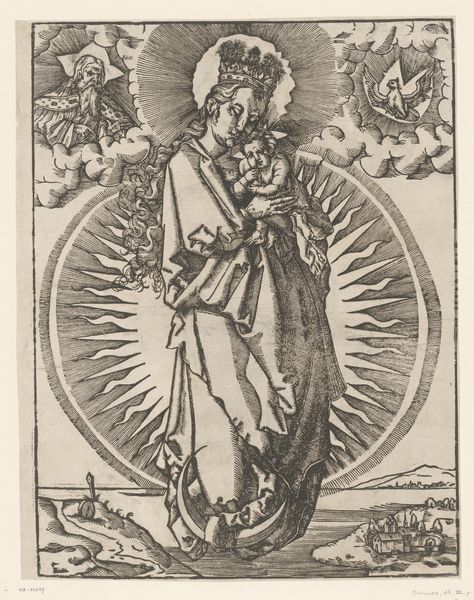
drawing, print, woodcut
#
portrait
#
drawing
# print
#
figuration
#
woodcut
#
line
#
northern-renaissance
Dimensions: Sheet: 7 3/4 × 5 3/8 in. (19.7 × 13.7 cm)
Copyright: Public Domain
Curator: Looking at "The Sudarium of Saint Veronica," a print crafted between 1500 and 1515 by Hans Burgkmair, now residing at the Metropolitan Museum of Art in New York. The print presents Saint Veronica holding the cloth imprinted with the face of Christ. Editor: There's a somber gravity in this woodcut; the rigid lines and monochromatic palette amplify a feeling of deep suffering, almost like viewing an artifact itself. Curator: The stark lines of the Northern Renaissance woodcut tradition serve to emphasize the solemnity of the subject matter, bringing forward Veronica’s enduring act of compassion toward Jesus. The sudarium itself—that visual representation of the divine face on cloth—becomes a powerful symbol. Editor: I find myself dissecting the visual organization. The pillars create this tight, enclosed picture frame that emphasizes both the subject and the central placement of Christ's image, the lines working as reinforcement for an iconic picture. Curator: Those pillars aren't just decoration, they symbolically invoke classical architecture and structure and suggest enduring legacy of sacrifice and memory through faith. The detailed representation in the woodcut reflects a transition in religious devotion within the changing artistic landscape. The work brings themes of loss, compassion, and a wish to remember, but at the center we observe human compassion within the divine narrative. Editor: And yet, notice how the tight linear design around Veronica's head, as well as the rigid drapery contrasts with the relatively fluid hair of Jesus, as if suggesting his divine nature surpasses the mere mortal interpretation offered by the woman, reinforcing her role. It is as if Burgkmair used the pictorial composition to suggest different realities, playing one figure against the other. Curator: The woodcut serves not just as an object of veneration, but a symbolic encapsulation of devotion; a lasting representation, reminding viewers about the impact of a singular act. The enduring representation connects cultural beliefs with deeply resonant symbols. Editor: Looking back, I think Burgkmair has produced a very compelling object through composition. The tight detail, coupled with the dramatic expression, produces a visually engaging experience. Curator: I agree. This woodcut shows the profound power of visual narratives, speaking beyond eras and creating feelings that link symbols to universal human values.
Comments
No comments
Be the first to comment and join the conversation on the ultimate creative platform.
